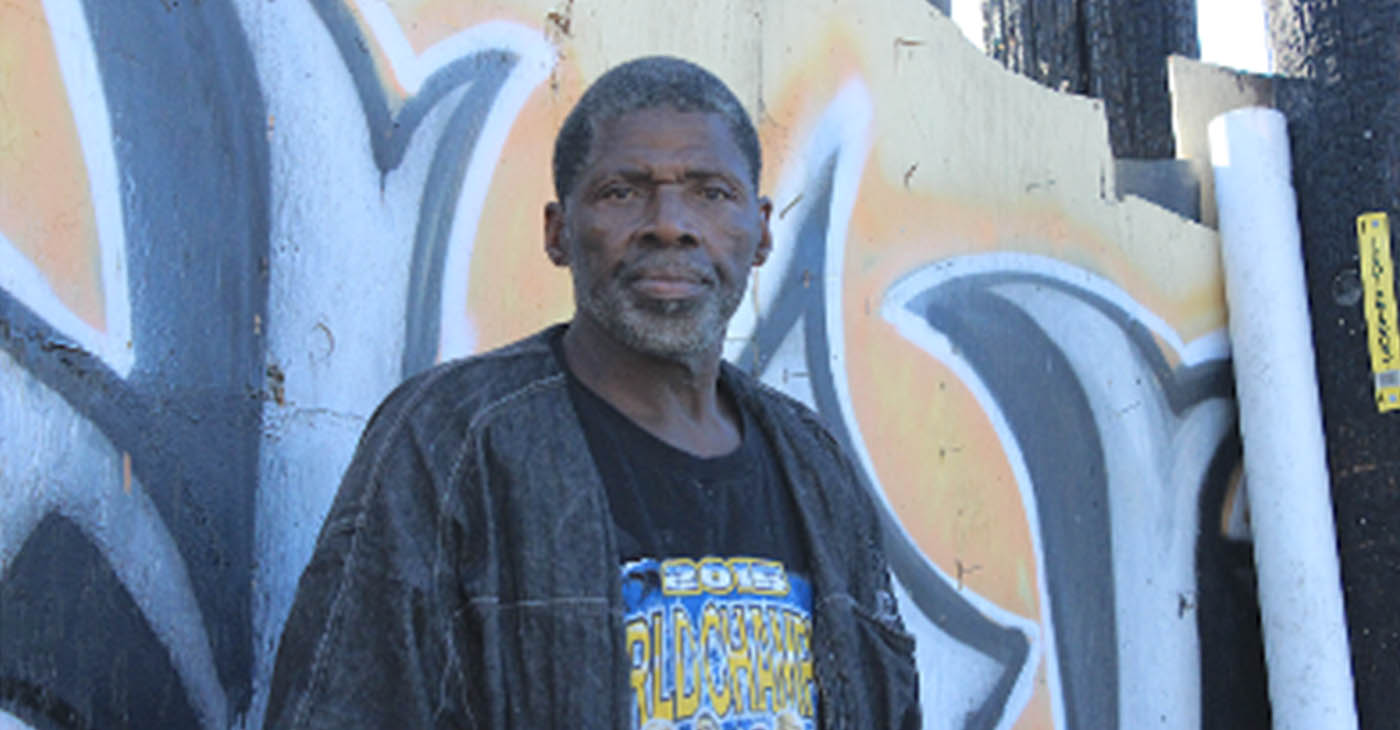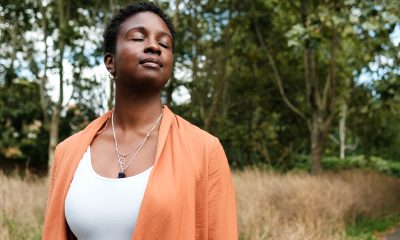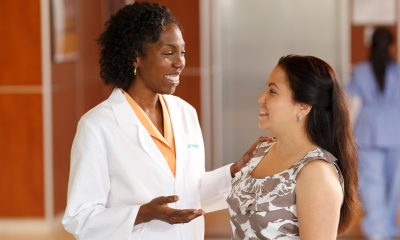Activism
After Wood Street Clearance, Homeless People Stay
Advocates claim about a dozen of them showed up on November 8 to support residents. One of them, Annmarie Bustamente, said their presence “definitely helped the residents block the eviction” and that the residents were “tired of displacement and said no” to a member of Oakland’s Public Works Department encouraging them to move.

By Zack Haber
On the morning of November 8, members of both Oakland’s Encampment Management Team, Public Works, and Police Department came to an area encompassing about 1/5 of a mile from Wood Street and Grand Avenue to Wood Street and 26th Street with the stated goal of clearing the location of homeless people. But after the attempted clearance, homeless people remained in the area.
“The objective was to move as many people as possible,” wrote Oakland Communications Director Karen Boyd in an e-mail. “But that could not be accomplished without the full cooperation of the community.”
“You can’t push us back any further than this,” said homeless resident Jessie Parker, a 63-year-old lifelong Oaklander who came to live on Wood Street after being shot in the leg. The injury prevented him from being able to do the physical movement required for the construction and electrical work he had done in the past. On November 4, the city put up pink notices informing him that starting in four days they would force him to vacate the area he’s lived in for about nine years, but he, like dozens of others living in vehicles, tents or makeshift homes along Wood Street, didn’t leave.
Parker’s statement references the fact that Wood Street is one of the westernmost streets in West Oakland. A little further west from where Parker lives is land owned by Caltrans under the 880 overpass where still more homeless people live, as well as a 1.5 acre plot of land belonging to a company called Gamechanger LLC. To the east are businesses and residential areas.
After about two years in delays, Gamechanger agreed to lease its land to the city for $1 a year and the city opened a Safe RV Parking site on July 7 on the company’s land through the non-profit Building Opportunities for Self Sufficiency.
In the Safe RV Parking site, residents who own RVs and trailers can legally live in them and receive services. It’s unclear how long this service will last, as the lease between GameChanger and the city can expire by November of next year. That same lease laid out plans to allow 75 RVs or trailers space to park, but while walking through the site on November 10, this writer counted 29 RVs while half of the site sat vacant. The site is not available for many residents, like Parker, who don’t have an RV or a trailer.
“I never received an offer to move in,” said Parker, who lives in a truck. “It’s for RVs only.”
The site opening has put other residents at risk of displacement who can’t or don’t want to access it. Since Oakland’s City Council unanimously passed its Encampment Management Policy in October of last year, despite protests and critical public comments during five hours of a meeting, city policy now states those living within 25 feet of such sites can face clearance.
Although their policy now allows it, the city had not attempted to move nor even encouraged people who are living near the Safe RV Parking site to leave the area until the November 8 operation. But recent communications from Justin Tombolesi, who is the constituent liaison for District 3 Councilmember Carroll Fife, have led advocates and homeless people to believe the company is now pressuring the city to force people to leave the area. In a text message to a homeless resident who lives near Wood Street, Tombolesi wrote “Gamechanger is suing the city because people are too close to the RV site.”
Gamechanger denies suing or pressuring the city. When asked if the company was suing or threatening to sue the city, the company’s lawyer, Pat Smith of Smith LLP, responded in an email, writing “Not at all — no thought of suing the city. The city is solely in charge of the site and ownership has no involvement or concern over how the city is handling things.”
In an e-mail, Boyd wrote that “No filings or actions to terminate the lease have been served upon the city,” but that the city has “spoken with legal counsel representing GameChanger’s lot regarding the city’s plans to create compliance.”
In another text message to the same resident, Tombolesi also claimed the city would allow residents living on Wood Street to move to a vacant portion of land off the street and just north of the Safe RV Parking site during the November 8 closure operation. No residents have moved into that location and residents, as well advocates who were on site that day, claim no one was invited to do so. Boyd said the city offered nine spaces in the city’s Community Cabins, and five spaces in a rapid rehousing program called The Holland. One resident accepted a space in the Community Cabins, which is a program that offers small, unheated shelter in shed-like spaces made by the Tuff Shed company.
Advocates claim about a dozen of them showed up on November 8 to support residents. One of them, Annmarie Bustamente, said their presence “definitely helped the residents block the eviction” and that the residents were “tired of displacement and said no” to a member of Oakland’s Public Works Department encouraging them to move.
Although the closure operation was originally slated to occur over three days between Monday November 8 and Wednesday November 10, no one from the city came back after the first day.
“The ability to proceed Monday impacted the entire operation,” wrote Boyd in an e-mail, “and activities for the following days were cancelled.”
Although homeless residents did not leave Wood Street, Oakland’s Police Department’s Public Information Officer Kim Armstead said the department did tow six vehicles for long expired registration on November 6 and 7 in the area in preparation for the closure.
According to Armstead, the department avoided towing vehicles that served as people’s homes, as the department, following the cities’ direction, has “agreed not to tow vehicles where there is clear evidence they are being used as shelter.” Armstead also said on November 8, OPD supported the city operation with two officers, one sergeant, and six police service techs who provided traffic control and security for city workers.
One homeless resident named Evangeline said the towing of her and her husband’s vehicle has made it difficult to go grocery shopping and to visit her mother, who just had a heart attack. The couple can’t afford to pay the fees to get the car back, so it will remain in the tow yard.
“We’re really stuck,” she said.
Although residents like Parker avoided being moved from Wood Street, it’s unclear when or if the city will come back to move them. According to Parker, a member of the non-profit Building Opportunities for Self Sufficiency has been working to secure some form of permanent housing for him, and he’s hopeful that the person will be successful.
“I’m a little older now so my peak interest is getting back into housing,” said Parker. “If I get into housing, I’m sure I won’t go back to this. I can’t take these harsh elements no more.”
Activism
Oakland Post: Week of April 24 – 30, 2024
The printed Weekly Edition of the Oakland Post: Week of April 24 – 30, 2024

To enlarge your view of this issue, use the slider, magnifying glass icon or full page icon in the lower right corner of the browser window. ![]()
Activism
Oakland Post: Week of April 17 – 23, 2024
The printed Weekly Edition of the Oakland Post: Week of April 17 – 23, 2024

To enlarge your view of this issue, use the slider, magnifying glass icon or full page icon in the lower right corner of the browser window. ![]()
Activism
Oakland Schools Honor Fred Korematsu Day of Civil Liberties
Every Jan. 30, OUSD commemorates the legacy of Fred Korematsu, an Oakland native, a Castlemont High School graduate, and a national symbol of resistance, resilience, and justice. His defiant stand against racial injustice and his unwavering commitment to civil rights continue to inspire the local community and the nation. Tuesday was “Fred Korematsu Day of Civil Liberties and the Constitution” in the state of California and a growing number of states across the country.

By Post Staff
Every Jan. 30, OUSD commemorates the legacy of Fred Korematsu, an Oakland native, a Castlemont High School graduate, and a national symbol of resistance, resilience, and justice.
His defiant stand against racial injustice and his unwavering commitment to civil rights continue to inspire the local community and the nation. Tuesday was “Fred Korematsu Day of Civil Liberties and the Constitution” in the state of California and a growing number of states across the country.
One OUSD school is named in his honor: Fred T. Korematsu Discovery Academy (KDA) elementary in East Oakland.
Several years ago, founding KDA Principal Charles Wilson, in a video interview with anti-hate organization “Not In Our Town,” said, “We chose the name Fred Korematsu because we really felt like the attributes that he showed in his work are things that the children need to learn … that common people can stand up and make differences in a large number of people’s lives.”
Fred Korematsu was born in Oakland on Jan. 30, 1919. His parents ran a floral nursery business, and his upbringing in Oakland shaped his worldview. His belief in the importance of standing up for your rights and the rights of others, regardless of race or background, was the foundation for his activism against racial prejudice and for the rights of Japanese Americans during World War II.
At the start of the war, Korematsu was turned away from enlisting in the National Guard and the Coast Guard because of his race. He trained as a welder, working at the docks in Oakland, but was fired after the bombing of Pearl Harbor in 1941. Fear and prejudice led to federal Executive Order 9066, which forced more than 120,000 Japanese Americans out of their homes and neighborhoods and into remote internment camps.
The 23-year-old Korematsu resisted the order. He underwent cosmetic surgery and assumed a false identity, choosing freedom over unjust imprisonment. His later arrest and conviction sparked a legal battle that would challenge the foundation of civil liberties in America.
Korematsu’s fight culminated in the Supreme Court’s initial ruling against him in 1944. He spent years in a Utah internment camp with his family, followed by time living in Salt Lake City where he was dogged by racism.
In 1976, President Gerald Ford overturned Executive Order 9066. Seven years later, the 9th Circuit Court of Appeals in San Francisco vacated Korematsu’s conviction. He said in court, “I would like to see the government admit that they were wrong and do something about it so this will never happen again to any American citizen of any race, creed, or color.”
Korematsu’s dedication and determination established him as a national icon of civil rights and social justice. He advocated for justice with Rosa Parks. In 1998, President Bill Clinton gave him the Presidential Medal of Freedom saying, “In the long history of our country’s constant search for justice, some names of ordinary citizens stand for millions of souls … To that distinguished list, today we add the name of Fred Korematsu.”
After Sept. 11, 2001, Korematsu spoke out against hatred and discrimination, saying what happened to Japanese Americans should not happen to people of Middle Eastern descent.
Korematsu’s roots in Oakland and his education in OUSD are a source of great pride for the city, according to the school district. His most famous quote, which is on the Korematsu elementary school mural, is as relevant now as ever, “If you have the feeling that something is wrong, don’t be afraid to speak up.”
-

 Activism4 weeks ago
Activism4 weeks agoOakland Post: Week of March 27 – April 2, 2024
-

 #NNPA BlackPress4 weeks ago
#NNPA BlackPress4 weeks agoBeloved Actor and Activist Louis Cameron Gossett Jr. Dies at 87
-

 Community1 week ago
Community1 week agoFinancial Assistance Bill for Descendants of Enslaved Persons to Help Them Purchase, Own, or Maintain a Home
-

 Activism3 weeks ago
Activism3 weeks agoOakland Post: Week of April 3 – 6, 2024
-

 Business1 week ago
Business1 week agoV.P. Kamala Harris: Americans With Criminal Records Will Soon Be Eligible for SBA Loans
-

 Activism2 weeks ago
Activism2 weeks agoOakland Post: Week of April 10 – 16, 2024
-

 Community1 week ago
Community1 week agoAG Bonta Says Oakland School Leaders Should Comply with State Laws to Avoid ‘Disparate Harm’ When Closing or Merging Schools
-

 Community6 days ago
Community6 days agoOakland WNBA Player to be Inducted Into Hall of Fame
























































